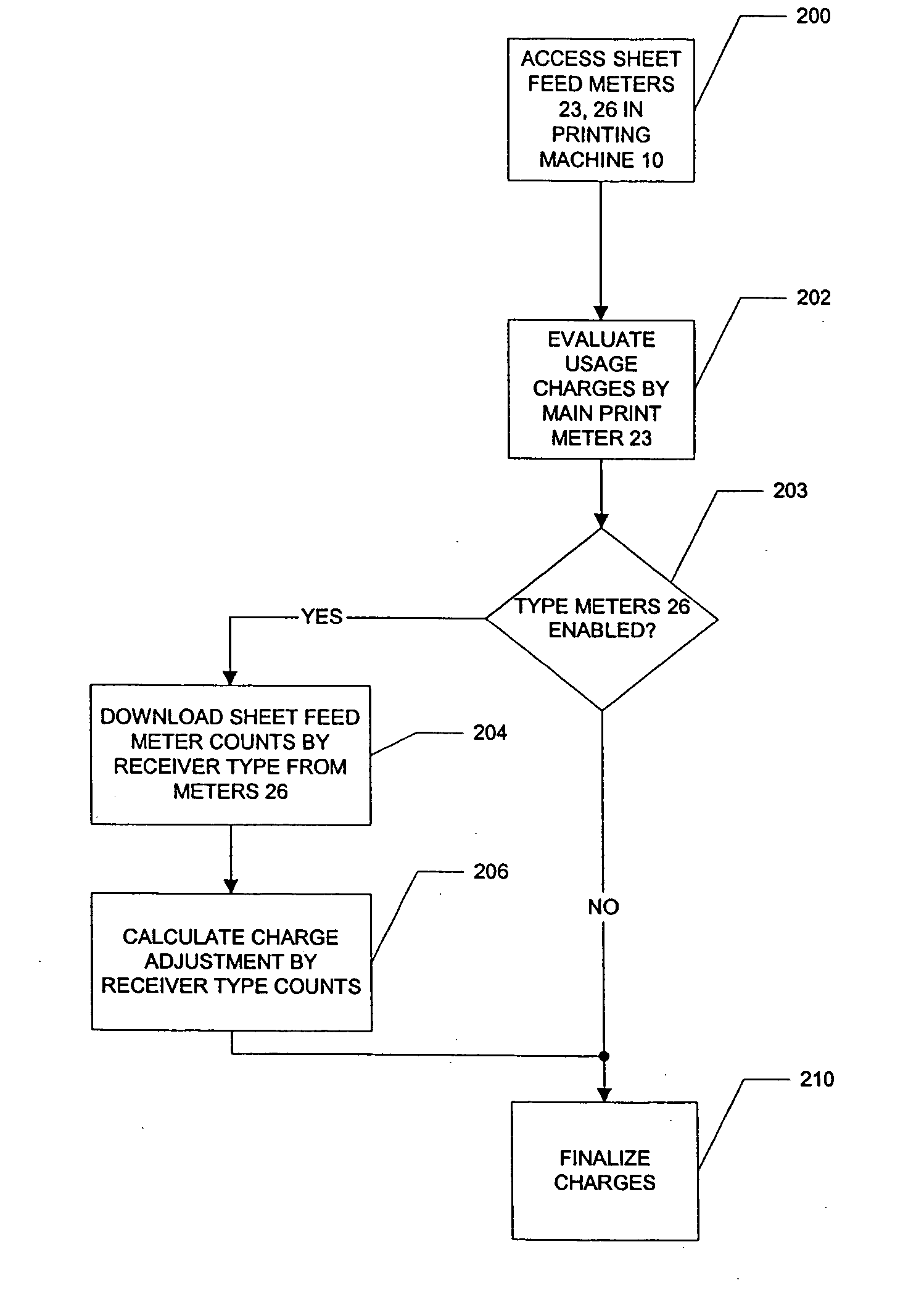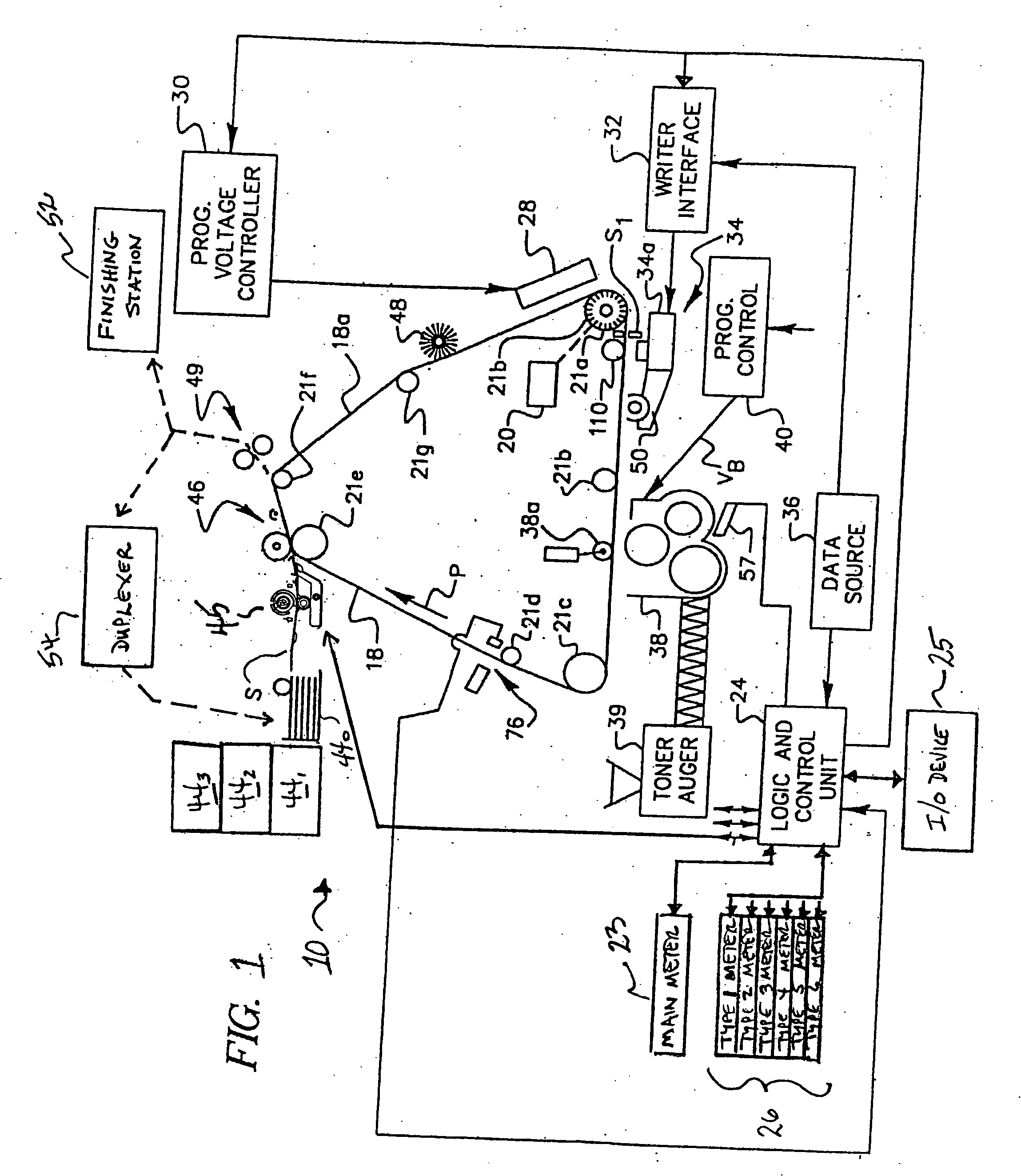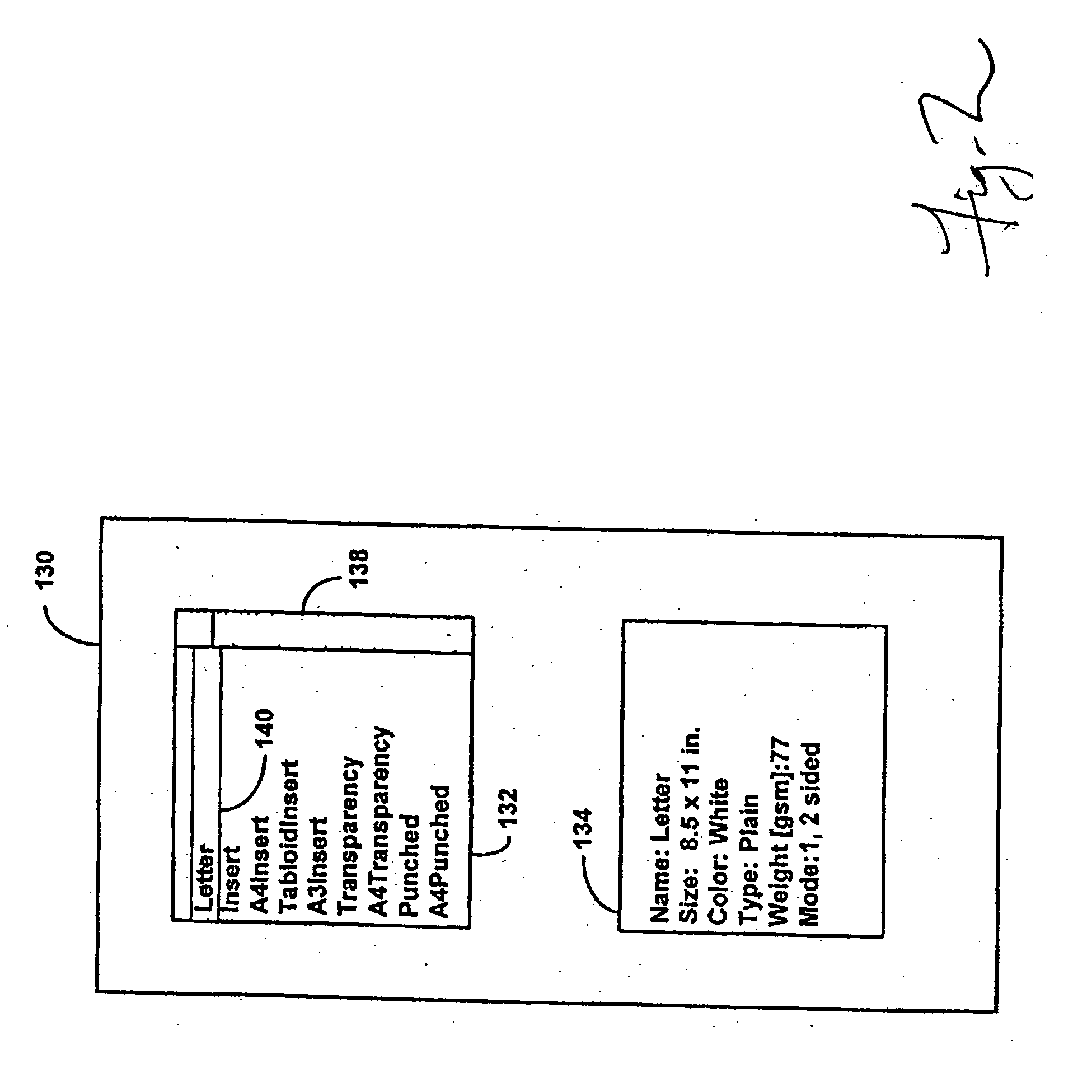Monitoring of receiver type usage in a printing machine
a technology of printing machine and receiver, applied in the field of digital printing, can solve the problems of printing documents at very high resolution and precision, affecting the mechanical components of the printing machine, and requiring extremely tight mechanical tolerances
- Summary
- Abstract
- Description
- Claims
- Application Information
AI Technical Summary
Benefits of technology
Problems solved by technology
Method used
Image
Examples
Embodiment Construction
[0019] The present invention will be described in connection with its preferred embodiment, namely as implemented into an electrographic printing machine, as it is believed that this invention will be especially beneficial in such an application. However, it is also contemplated that this invention may also provide similar important benefits in other implementations than an electrographic printing machine as described. Accordingly, it is to be understood that the following description is provided by way of example only, and is not intended to limit the true scope of this invention as claimed.
[0020] Referring now to FIG. 1, printing machine 10 according to the preferred embodiment of the invention will now be described. In electrographic printing machine 10 of FIG. 1, photoconductor 18, which is a moving recording member such as a photoconductive film belt, is entrained about a plurality of rollers or other supports 21a through 21g, one or more of which is driven by a motor to advan...
PUM
 Login to View More
Login to View More Abstract
Description
Claims
Application Information
 Login to View More
Login to View More - R&D
- Intellectual Property
- Life Sciences
- Materials
- Tech Scout
- Unparalleled Data Quality
- Higher Quality Content
- 60% Fewer Hallucinations
Browse by: Latest US Patents, China's latest patents, Technical Efficacy Thesaurus, Application Domain, Technology Topic, Popular Technical Reports.
© 2025 PatSnap. All rights reserved.Legal|Privacy policy|Modern Slavery Act Transparency Statement|Sitemap|About US| Contact US: help@patsnap.com



